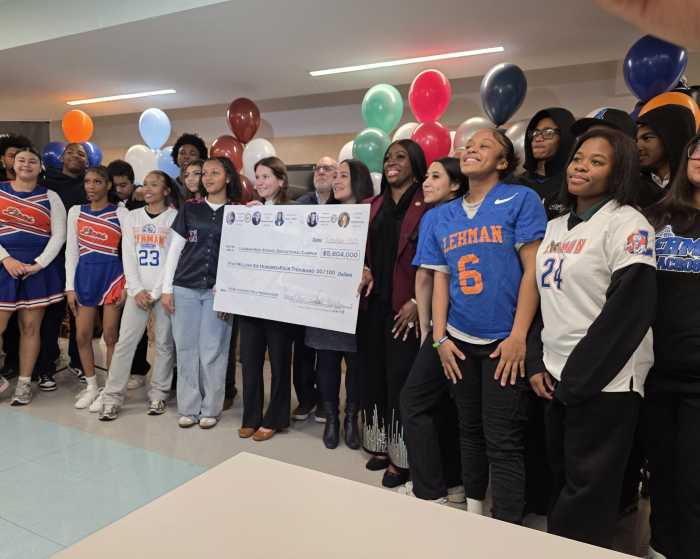When the market goes up and down, and you’re wondering what that means to your budget, it is tempting to put off saving for college. Of course you want the best for your children, but it’s hard to save for future plans when current needs are so pressing.
A 529 lets you click, start, save.
Every 529 account is designed to make college savings easier. Start one online in just a few minutes, and with automatic contributions and tax-deferred growth, your account can have the momentum to reach your goal.
Why are 529 accounts so important?
Tuition costs are trending up, and student debt is rising. This increase in college costs and student debt may be a key factor in decreasing home ownership among young New Yorkers.1 Parents and grandparents are taking on debt to help out. And many families have learned that borrowing for college can cost twice as much as saving for it.2
Where do I find the right 529?
Almost every state has a 529 plan, so you have many options. The research can seem overwhelming, but consider tax benefits in your home state, and fees, too. NY’s 529 Direct Plan offers some of the lowest fees available for 529 plans.
What’s this about tax benefits?
State tax benefits vary, so it pays to compare. New York residents are eligible for a state tax deduction for contributions to their NY’s 529 Direct Plan account–a deduction of up to $5,000 per person, or $10,000 for a married couple. That’s in addition to tax-deferred growth on the State and federal level. Please consult with your tax advisor.*
Who can open a 529 account?
In New York, any U.S. citizen or resident alien with a Social Security Number or Individual Taxpayer Identification Number can open an account.
Who can be the beneficiary?
You can open an account for a child, grandchild, friend, or even yourself. The only rule is that the beneficiary must be a U.S. citizen or resident alien with a valid Social Security Number or Individual Taxpayer Identification Number.
How can I contribute to my child’s account?
Most plans offer electronic bank transfers, contributions from your bank account, checks, and sometimes payroll deductions.
How and where can you use the money?
You can use NY’s 529 Direct Plan savings at federally accredited institutions in or out of New York, public or private, including 2- or 4-year colleges or universities or graduate, vocational and technical schools. Generally, that includes any institution with a U.S. Department of Education School Code. (Want to confirm? Check here.) Use savings for tuition, books, supplies, certain room and board expenses, computers, software and more. IRS Publication 970 has the specifics.
How can friends and family contribute to 529 savings?
In New York, 529 account owners can sign up for a gift code with Ugift®, and share it with people who want to contribute to the beneficiary’s account.
Friends and family can also open their own NY’s 529 Direct Plan account with your child as beneficiary. The owner controls the account and enjoys many tax advantages. Check with your tax advisor for your individual situation.**
What if my beneficiary doesn’t go to college or gets a scholarship?
Your 529 funds aren’t “use or lose.” If the beneficiary doesn’t need the savings, you can transfer the balance to another eligible family member without penalty. If the beneficiary only needs some of the savings thanks to scholarships, you can withdraw the equivalent amount of the scholarship and pay income taxes on the earnings, with no federal income tax penalty.
For situations when the savings are not used for eligible higher education expenses, the account owner can take a nonqualified distribution and pay the taxes on it. Nonqualified withdrawals may be subject to taxes and penalties, so check with your tax advisor for your individual situation.**
What impact do 529 savings have on eligibility for federal financial aid?
Students can still apply for many kinds of financial aid. Plus, 529 savings in accounts owned by parents are considered parental assets, and treated at a lower percentage rate (5.64% in 2019) in the need-based aid calculation. Get details here.
What fees apply?
Fees vary, so compare carefully at collegesavings.org. Remember that lower fees mean more money stays in your account to grow. NY’s 529 Direct Plan, for example, has no annual account fees or sales commissions, and has one of the country’s lowest expense ratios. For every $1,000 you invest, you’ll pay $1.30 a year in fees (0.13% total annual asset-based fee).
What if money’s tight?
A 529 account is a smart move that puts time to work for you. You can start small, too, since many plans, including New York’s, have no minimum contributions. The best time to start is now.
More questions? Get answers at nysaves.org
References
1 https://www.newyorkfed.org/medialibrary/media/research/staff_reports/sr820.pdf
2 https://investor.vanguard.com/college-savings-plans/save-vs-borrow
*Contributions of up to $10,000 are deductible annually from New York State taxable income for married couples filing jointly; single taxpayers can deduct up to $5,000 annually. New York State tax deductions may be subject to recapture in certain circumstances such as rollovers to another state’s 529 plan, federal nonqualified withdrawals, or withdrawals used to pay elementary or secondary school tuition, registered apprenticeship program expenses, or qualified education loan repayments as described in the Disclosure Booklet and Tuition Savings Agreement. State tax benefits for non-resident New York tax payers may vary. Please consult your tax advisor about your particular situation.
**Earnings on federal nonqualified withdrawals may be subject to federal income tax and a 10% federal penalty tax, as well as state and local income taxes. Tax and other benefits are contingent on meeting other requirements. Please consult your tax advisor about your particular situation.
Investment returns are not guaranteed, and you could lose money by investing in the New York’s 529 College Savings Program Direct Plan.
For more information about New York’s 529 College Savings Program Direct Plan, download a Disclosure Booklet and Tuition Savings Agreement [nysaves.org] or request one by calling 877-NYSAVES (877-697-2837). This document includes investment objectives, risks, charges, expenses, and other information. You should read and consider them carefully before investing.
Before you invest, consider whether your or the beneficiary’s home state offers any state tax or other benefits that are only available for investments in that state’s 529 plan. Other state benefits may include financial aid, scholarship funds, and protection from creditors.
The Comptroller of the State of New York and the New York State Higher Education Services Corporation are the Program Administrators and are responsible for implementing and administering the Direct Plan. Ascensus Broker Dealer Services, LLC, serves as Program Manager and, in connection with its affiliates, provides recordkeeping and administrative support services and is responsible for day-to-day operations of the Direct Plan. The Vanguard Group, Inc., serves as the Investment Manager. Vanguard Marketing Corporation provides marketing and distribution services to the Direct Plan.
No guarantee: None of the State of New York, its agencies, the Federal Deposit Insurance Corporation (FDIC), The Vanguard Group, Inc., Ascensus Broker Dealer Services, LLC, nor any of their applicable affiliates insures accounts or guarantees the principal deposited therein or any investment returns on any account or investment portfolio.
New York’s 529 College Savings Program currently includes two separate 529 plans. The Direct Plan is sold directly by the Program. You may also participate in the Advisor-Guided Plan, which is sold exclusively through financial advisors and has different investment options and higher fees and expenses as well as financial advisor compensation.
© 2020 New York’s 529 College Savings Program Direct Plan

































